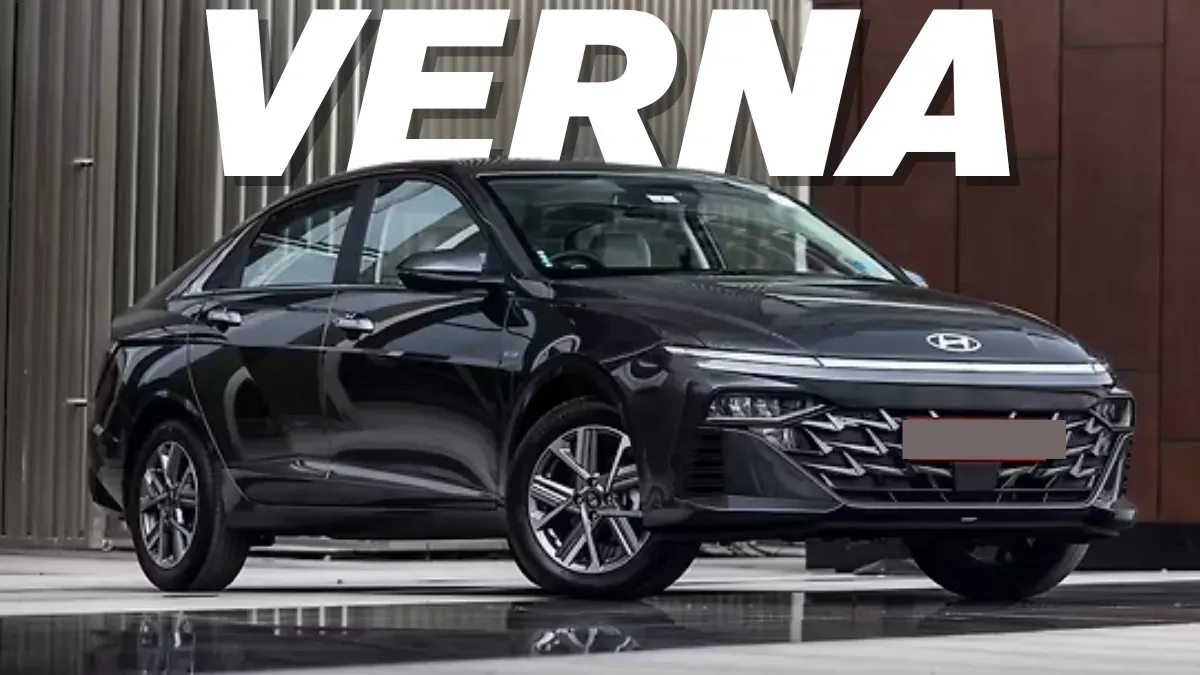The Hyundai Verna has been a household name in the Indian sedan market for over a decade. Known for its elegant design, smooth driving experience, and feature-rich cabin, the Verna has always stood out in the crowded mid-size sedan space. With its latest generation, Hyundai has taken a bold leap in styling, performance, and safety. But the big question is — can the new Verna truly redefine what we expect from a mid-size sedan in 2025?
Exterior Design
Hyundai has given the new Verna a radical makeover. The exterior is sharp, futuristic, and aggressive — a major shift from the conservative styling of the previous model. The front features a full-width LED DRL strip, a parametric grille, and sleek split LED headlamps that give it a bold road presence.
From the side, the sloping roofline gives it a coupe-like silhouette, enhancing the sporty appeal. The rear design is equally striking with connected LED tail lamps and sharp character lines. Hyundai has undoubtedly created one of the most stylish sedans in its segment.
Interior and Features
Step inside the new Verna, and you’re welcomed into a premium, tech-packed cabin. The layout is driver-focused with a dual-screen setup — a 10.25-inch infotainment touchscreen and a fully digital instrument cluster. The cabin materials feel high-quality, with soft-touch surfaces, ambient lighting, and ventilated front seats adding to the luxury quotient.
Features include a Bose 8-speaker audio system, wireless charging, automatic climate control, rear AC vents, voice commands, powered driver seat, and a smart electric sunroof. The rear seat space is also more generous than before, offering better legroom and comfort for passengers.
Engine Options and Performance
The new Hyundai Verna offers two petrol engine options — a 1.5L naturally aspirated engine and a 1.5L turbo-petrol engine. The turbo variant produces an impressive 160 PS of power, making it one of the most powerful in the segment.
Transmission options include a 6-speed manual, IVT (for the NA engine), and a 7-speed DCT (for the turbo engine). The turbo Verna delivers a thrilling performance with quick acceleration, refined engine response, and smooth gear shifts. Meanwhile, the NA engine is ideal for daily urban driving with a focus on fuel efficiency.
Ride quality is composed, and the suspension handles bad roads and highway cruising with ease. The steering feels well-weighted, offering decent feedback for spirited driving.
Safety Features
Hyundai has equipped the Verna with a host of safety features, including 6 airbags as standard (with up to 8 airbags in higher variants), ABS with EBD, ESC, hill start assist, TPMS, and ISOFIX mounts.
One of the key highlights is Level 2 ADAS (Advanced Driver Assistance System) in select variants. This includes features like forward collision warning, lane-keep assist, blind spot monitoring, adaptive cruise control, and autonomous emergency braking — making it one of the most advanced sedans in terms of safety tech.
Variants and Pricing
The Verna is available in multiple variants: EX, S, SX, and SX(O). Prices start around ₹11 lakh and go up to ₹17.5–₹18 lakh (ex-showroom), depending on the engine and transmission. While the turbo-petrol variants come at a premium, they offer unmatched performance and features in this price bracket.
Conclusion
The all-new Hyundai Verna is not just a facelift — it’s a complete reinvention. With its daring design, futuristic cabin, powerful engine options, and cutting-edge safety tech, Verna now challenges even entry-level premium cars.







